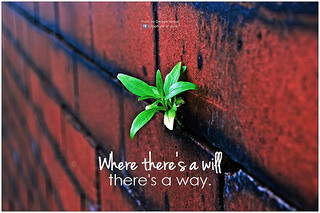 “Where there’s a will, there’s a way.”
“Where there’s a will, there’s a way.”
Often, when discussing the possibility of expanding an arts organization’s commitment to community engagement the first reaction I hear is the difficulties anticipated in doing so–scarce funds, too little time, alienating current stakeholders, abandoning “excellence” (I have to work hard to avoid jumping down the throat of the person that presents that one!), etc.
There are at least some issues to address with each of these concerns, but they get ahead of themselves. If community engagement is good for the arts organization, if it is good for the community, if it is good for art (and it should be for all or something is not being done correctly), begin with that and then figure out the rest.
Last summer, in a great post on the relationship between civic leadership, civic responsibility, techtonic social shifts, and the arts (The Arts in a Civic World Upside Down) Diane Ragsdale included reference to academic research by P.Y.T. Sun and M.H. Anderson on “civic capacity.” The authors describe it as being made up of three components:
- Civic Drive: Do you have the desire and motivation to be involved with social issues and to see new social opportunities?
- Civic Connections: Do you have the social capital (i.e., networks) to enable you to engage in successful collaborations with other organizations and institutions in your community?
- Civic Pragmatism: Do you have the ability to translate social opportunities into practical reality (i.e., what structures and resources can you leverage to make things happen)?
[Sun, P.Y.T. & Anderson, M.H. (2012). Civic capacity: Building on transformational leadership to explain successful integrative public leadership. The Leadership Quarterly 23 (2012), 309-323.]
When I read it, this framing put me immediately in mind of the requirements for effective community engagement, beginning with “Do you really want to do it?” If the essential motivation is deep, answers to any obstacles will be sought. If not, perceived obstacles will function as excuses to go no further.
For arts organizations seeking to engage, the will to do so (the drive) is built upon by developing the relationships necessary to know the community. The fancy terminology for this is “social capital” but that just means relationships out of which the work can grow. The third step, “ability to translate . . . into practical reality” is the one for which arts organizations are well prepared. The mechanics of “doing things,” creating and producing programs growing out of the drive and connections, is what we do.
But first, believe.
Engage!
Doug
Photo:![]()
![]() Some rights reserved by symphony of love
Some rights reserved by symphony of love
